
Section 10. Science and innovations
10.1. Innovations in 2021
Innovations in Agriculture
Agriculture is among the most advanced and innovation-driven sectors. Currently, the key modern technologies applied by the agrarians include:
• Machine learning. AI on the base of neural networks collects and analyzes different data to make specific conclusions. This technology helps to speed up breeding of new crop varieties, identify crop diseases at early stages, and select good quality seeds;
• IoT-sensors collect various data and indicators for making forecasts. The sensors collect weather and soil data in the fields, while in greenhouses they can regulate temperature, moisture and irrigation. The sensors also predict the production volume helping farmers to better plan selling;
• Automation. Automated machines are used for weeding, harvesting (including such crops as strawberries and tomato), and controlling air temperature in grain bins and moisture content of harvested fruits;
• E-document flow greatly facilitates and improves operations of agricultural enterprises: documents are timely approved through reduced preparation and approval processes; administrative and logistical inputs are reduced; continuous access to documents is provided;
• Drones. Drones can survey agricultural fields, find dry areas, irrigate fields, assess conditions of crops, find and analyze places of better or worse growing. Drones are used for aero- and photo-surveying, imaging, 3D-modeling, thermal imaging and scanning. Robot tractors are used for tillage, sowing and harvesting.
Source: propozitsiya.com
Examples of innovative solutions
Researchers at Eindhoven University of Technology (the Netherlands) have developed a plasma-powered mini-planti that produces cheap fertilizer using only sun, water and air. It uses a small-scale reactor to make liquid nitrogen-based fertilizer that can be used by any farmer who has access to sunlight and water. Test operations were completed successfully in Uganda. Next step is to bring the mini-plant to market.
A project integrating solar technology and microalgae cultivation to be launched at the ENEA Center in Portici (Naples) as part of an agreement signed between Enel Green Power and ENEA. A scalability analysis will be carried out also for applications on larger photovoltaic plants. The trial involves cultivating microalgae with a high commercial value (between 100 and 200 euros per kilogram) with a crop system fully integrated within the photovoltaic plant.
The multipurpose robotic system GRoW has been developed by Israeli agtech company MetoMotion and successfully tested at the De Ruiter Experience Center. In October, an official milestone measurement was taken and showed that GRoW harvested a complete row of tomatoes with a 90% success rate and no human intervention. GRoW is designed to harvest different crops, prune, monitor and de-leaf. GRoW also allows the grower to continuously collect crop data to better forecast total yield.
Rantizo (USA) has developed the technology of drone-delivered applications of fungicides. The solution includes specific software, drones, auxiliary equipment, licensing and technical support. The precision of applications is achieved through artificial intelligence (AI).
Small Robot Company (SRC), a British agritech startup for sustainable farming, has developed AI-enabled robots – named Tom, Dick and Harry – that identify and kill individual weeds with electricity. These agricultural robots could reduce the use of harmful chemicals and heavy machinery. Robot Tom can scan 20 hectares (49 acres) a day, collecting data which is then used by Dick, a “crop-care” robot, to zap weeds. Then robot Harry’s turn to plant seeds in the weed-free soil. Using the full system, once it is up and running, farmers could reduce costs by 40% and chemical usage by up to 95%.
The Dutch Ridder introduces innovative indoor positioning system CoRanger. CoRanger is a unique patented system that can pinpoint the positions of plants, people, and objects in the greenhouse to within 10 cm. The data from logistical systems, crops, drones, sensors or even picking robots and data platforms are integrated in a single information platform. By applying the CoRanger concept in the Productive labor registration system, no time is lost on entering and checking harvest and production data. All registration takes automatically place in the background, without errors and is fully accurate and secure. This saves a lot of time and labor.
Water Quality Monitoring
Robot DraBot collects data on water quality. The unique soft robot developed by researchers at Duke University (USA) is electronics-free and uses self-healing hydrogels to watch for changes in pH within seconds. The body plan of a dragonfly is equipped with microchannels to supply air to wings and allow air to exit in the backward direction. This enables efficient skimming over water surface and responding to ambient conditions, such as pH, temperature or presence of oil.
Water Treatment and Desalination
Studiomobile and Pnat (Italy) developed the autonomous floating Jellyfish Barge on the base of solar energy for water purification. There are 7 desalination units planted around the perimeter to purify brackish, salt or contaminated water. The desalination units are able to produce 150 liters (39.6 gallons) of clean fresh water every day from the existing water body. The simple materials, easy self-construction, and low-cost technologies make it accessible to many communities that may not have a big fund. The module has a wooden base that floats on 96 recycled plastic drums and supports a glass greenhouse where the crops grow. Inside it, there is a high-efficiency hydroponic cultivation method that helps increase water savings by 70% compared to traditional hydroponic systems. The Jellyfish Barge grows about 1200 plants per month.
The Korean scientists made a seawater desalination filter. They used a membrane distillation process that resulted in 99.9 percent salt rejection for one month. They used poly vinylidene fluoride-co-hexafluoropropylene as the core and silica aerogel mixed with a low concentration of the polymer as the sheath to produce a composite membrane with a superhydrophobic surface without suffering from wetting issues. The new desalination technique can make sea water fit to drink in minutes.
Water from Air
A team of researchers from the National University of Singapore (NUS) has recently created a solar-powered, fully automated device called SmartFarm. The SmartFarm consists of a transparent acrylic container with the soil inside it. The extremely absorbent hydrogel is placed under the motorized top cover with solar panels. At night, the top cover opens to allow the hydrogel to attract atmospheric moisture. In the day, at a pre-set timing, the top cover closes to confine the water vapor allowing it to be condensed on the enclosure’s surface, particularly on the top cover. Water droplets will be gradually formed and when the moisture stored in the copper-based hydrogel is completely released, the top cover automatically opens and water droplets which are wiped off by the parallel wipers fall onto the soil to irrigate the plants. The remaining water droplets on the walls of the device continue to provide a humid environment for healthy plant growth. The hydrogel takes in moisture up to three times its weight. It also releases water quickly under natural sunlight – one gram of the hydrogel releases 2.24 gram of water per hour. The water released meets the WHO’s standards for drinking water.
New material could harvest water all day long. The micro-architected hydrogel membrane can produce water through both solar steam-water generation and fog collection — two independent processes that typically require two separate devices. In an operation test conducted during the night, samples of the materials ranging from 55–125 square centimeters in the area were able to collect about 35 milliliters of water from fog. In tests during the day, the material was capable of collecting about 125 milliliters from solar steam.
An ultraporous compound “Portable Oasis” can extract water molecules from dry desert air, store them as tiny “icicles” and then release them as clean drinking water. The technology relies on an aluminum-based compound called MOF-303, one of more than 20,000 designer materials known as metal-organic frameworks. These substances are made up of both inorganic and organic molecules, which link together to form open lattice structures that resemble Tinkertoy stick-and-node play set. MOF-303 is particularly good at squeezing traces of humidity from the air. The material’s nanoscale pockets readily fill up with water vapor. These captured water molecules rapidly form hydrogen bonds with other passing water molecules, seeding dense ice crystals. Once the MOF has filled its pores with these minuscule icicles, applying a little extra heat is enough to release the molecules as potable drinking water.
Alternative Energy
A team of researchers from Pusan National University (PNU) in South Korea have created a prototype of ultrathin foldable solar cells. For their research work, they synthesized single-walled carbon nanotubes (CNTs)–polyimide (PI) composite film with a thickness of 7 µm and used it as a foldable transparent conductor in perovskite solar cells (PSCs). The resulting material was doped using MoOx to increase its conductivity with the aim to ensure maximum performance. The foldable solar cells can withstand more than 10,000 folding cycles with a folding radius of 0.5 mm. This prototype offered 80% transparency and a power conversion efficiency of 15.2%.
Spanish firm pioneered bladeless wind turbines. The 3m-high cylindrical turbines are designed to oscillate within the wind range, generating electricity from the vibration. Such turbines are lightweight, noiseless and cheaper than traditional wind turbines and are able to adapt to the changes of the wind direction in a faster manner. In addition, this system also eliminates the mechanical elements that wear down due to friction, reducing maintenance costs and prolonging their useful life. The bladeless turbines are also able to reduce the visual as well as environmental and ecological impact, since they are not configured with blades that impose a safety risk for birds and bats.
Scientists from the Martin Luther University Halle-Wittenberg (MLU) have discovered that by alternating the layers of ferroelectric solar cells with different materials, they can increase the electrical current by a factor of a thousand. They embedded the barium titanate between strontium titanate and calcium titanate. This was achieved by vaporizing the crystals with a high-power laser and redepositing them on carrier substrates. This produced a material made of 500 layers that is about 200 nanometers (0.00000078-inches) thick. This enabled the otherwise not very reactive barium titanate to produce 1,000 times its original energy.
Space-based solar panels. The California Institute of Technology (CalTech) within the framework of the Space-based Solar Power Project (SSPP) is developing technology capable of generating solar power in space and beaming it back to Earth. Collecting solar power in space and transmitting the energy wirelessly to Earth through microwaves enables terrestrial power availability unaffected by weather or time of day. The project's first test will occur in early 2023.
TerraBox turns sand and electricity into solar panels. The Maana Electric startup develops TerraBox, a fully automated factory that takes sand and produces solar panels. The TerraBox fits within shipping containers, allowing the mini-factories to be transported to deserts across the globe and produce clean, renewable energy.
10.2. Central Asia Expert Platform on Water Security, Sustainable Development, and Future Studies
In 2021, the work on the formation of the Expert Platform on Water Security, Sustainable Development and Future Studies (EP) was continued. The EP site was opened on the portal CAWater-Info.

As part of the contract with the UNECE Project “Support to the Network of Russian Speaking Water Management Organizations” and with the involvement of national experts from the region (1) the International EECCA NWO Conference “Transboundary Water Cooperation in the EECCA countries: Lessons Learned and Future Directions” was held on March 2-3, 2021 and followed by adoption of the Resolution and publication of the EECCA NWO collection of papers “Lessons of transboundary cooperation in EECCA countries”; (2) the database of international experts was created. It includes experts in different spheres in the region (water, agriculture, land, environment and ecology, energy, etc.). The database is open; (3) the analysis of statements of the EECCA countries at UNGA was carried out: “Key highlights in the statements made at the general debate of the UN General Assembly by the countries of Central Asia in 1992-2020” and “Highlights on the environmental matters and international cooperation in the statements made at the general debate of the UN General Assembly by the Countries from Eastern Europe, Caucasus and Central Asia in 1992-2020”; (4) Thematic study of best practices in IWRM and transboundary water cooperation in the EECCA countries was carried out and the collection of papers “Selected practices of IWRM and transboundary water cooperation in EECCA countries” was published.
The aspects of EP development are also included in the Project "Regional mechanisms for the low-carbon, climate-resilient transformation of the energy-water-land nexus in Central Asia" (German Government, International Climate Initiative 2020, partners – OECD, EBRD, UNECE, SIC ICWC), which is under development. The work under the Project is to be started in autumn 2022.
10.3. Leading Research Institutes of EECCA Countries
Belarus. Republican Unitary Enterprise “Central Research Institute for Complex Use of Water Resources” (CRICUWR)
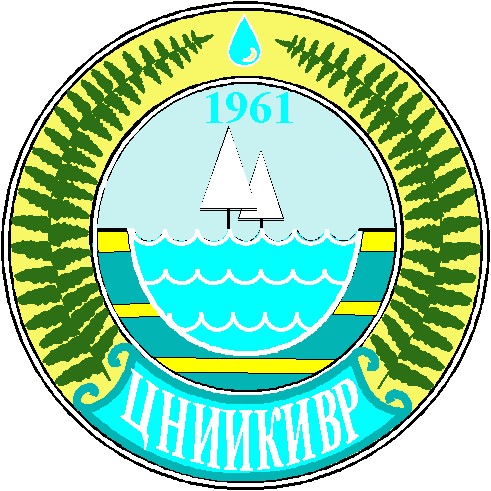 RUE CRICUWR was established in 1961. It is a back-up organization of the Ministry of Natural Resources and Environmental Protection of the Republic of Belarus (since 1994) for development of river basin management plans, inventory of national surface water bodies, schemes and projects of water protection zones and coastal strips of waterways and reservoirs, zones of sanitary protection of surface and groundwater intakes. It performs the functions of the head organization for maintaining the State Water Cadaster (SWC), provides information services to the economic sectors with data on water bodies, water resources, regime, quality, water use and wastewater discharge; exchanges data with neighboring states (on transboundary watercourses) and prepares information materials on water resources and their use for international organizations.
RUE CRICUWR was established in 1961. It is a back-up organization of the Ministry of Natural Resources and Environmental Protection of the Republic of Belarus (since 1994) for development of river basin management plans, inventory of national surface water bodies, schemes and projects of water protection zones and coastal strips of waterways and reservoirs, zones of sanitary protection of surface and groundwater intakes. It performs the functions of the head organization for maintaining the State Water Cadaster (SWC), provides information services to the economic sectors with data on water bodies, water resources, regime, quality, water use and wastewater discharge; exchanges data with neighboring states (on transboundary watercourses) and prepares information materials on water resources and their use for international organizations.
Activities in 2021
Research. The Institute’s Surface Water Division:
(1) made an inventory of surface water bodies in the Pripyat River basin based on available RS-data, drone images, and the forest surveying data. Field expeditions were undertaken. GIS layers were developed for 4214 sites in WGS84. The results are available in the information system of the State Water Cadaster.
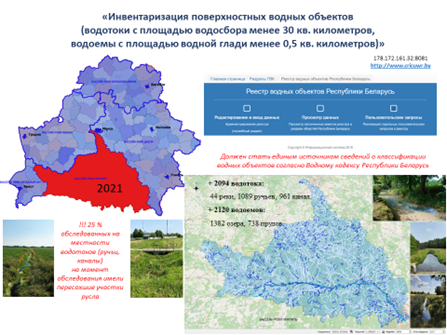
(2) made rating of regional environmental development (for provincial centers and Minsk) for the first time in Belarus as part of preparation of annual report “State of Environment in Belarus” for 2020.

(3) develops the information-analytical system “Water-protection areas” in part of control and analysis of activities in water-protection areas, including monitoring of violations. For this purpose, the RS data is used.
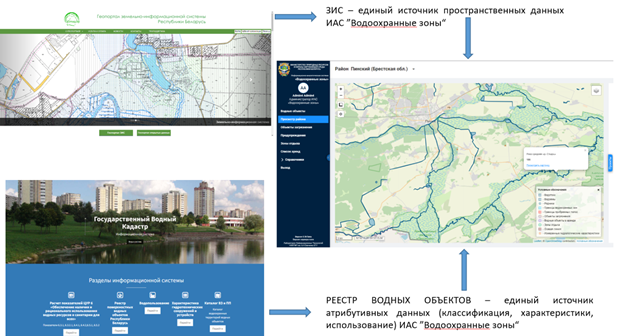
Events. The following events were organized: (1) VI International Water Forum „Springs of Belarus“ (June 3-5, Minsk); (2) a workshop as part of the EU Water Initiative for Eastern Partnership (EUWI+) – components 2 and 3, where progress achieved in Belarus and further prospects were discussed (March 4, Minsk).
Mass media. The results of research efforts were covered by the BELTA press center: (1) roundtable “Summarizing the environmental campaign – Let’s improve our home area” (January 14); (2) comments by Ye.I. Gromadskaya on the theme “A book on 1183 springs issued in Belarus” (January 14).
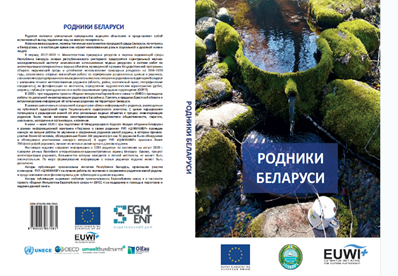
Publicationsи.
Ye.I. Gromadskaya, D.S. Bakanova. On the key outcomes of the inventory of Belarus’ springs, first cycle // Journal “Science and Innovations”, Minsk, 2021 – Issue 8. – pp. 79-83.
Monograph – Recommendations for identification, restoration and use of springs in Belarus - Minsk: UP “Enciklopediks”, 2021 – 40 pp.
Source: RUE CRICUWR
Kyrgyzstan. Institute of Water Problems and Hydropower at the National Academy of Sciences of the Kyrgyz Republic (IVP&GE NAN KR)
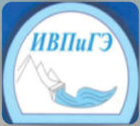 IVP&GE NAN KR was established in 1992. The Institute’s activity is focused on fundamental research and applied technology development in the area of hydrology and hydropower. The Tien Shan Highland Research Center and the Ala-Archa Polygon for studies of hazardous hydrological processes operate at the Institute.
IVP&GE NAN KR was established in 1992. The Institute’s activity is focused on fundamental research and applied technology development in the area of hydrology and hydropower. The Tien Shan Highland Research Center and the Ala-Archa Polygon for studies of hazardous hydrological processes operate at the Institute.
Activities in 2021
Research. Based on the 2021-2023 Program “Analysis of opportunities for forecasting and management of water and energy resources in the Kyrgyz Republic in the context of climate change and under anthropogenic load”, research efforts are carried out on the following themes: (1) Assessment of river runoff in Kyrgyzstan in the context of climate change; (2) Study of hydropower potential in the basins of Issyk-kul Lake and the Chu River under conditions of climate change; (3) Development and justification of groundwater management plans for the eastern part of the Chu Valley on the base of non-stationary geo-filtration models; (4) Study of hazardous exogenic hydrogeological processes in Tien Shan; (5) Environmental and geographic characteristics of sustainable river basin development in Kyrgyzstan in the context of climate change and anthropogenic load; (6) Creation of RS-based geoinformation system for monitoring water and land in Kyrgyzstan.
The Tien Shan Highland Research Center conducts research on the theme “Comprehensive study of dynamics of physical and geographic processes in highland zones of Kyrgyz Tien Shan and Pamir-Alai.”
The main research results for 2021 are as follows: (1) using the meteorological data of KyrgyzHydroment, assessed climate changes and calculated linear trends of mean annual temperature and rainfall; (2) analyzed long-term river runoff variations, identified flow cycles, and calculated trends of runoff changes; (3) formalized problems of groundwater optimization and management in eastern part of the Chu Valley. The developed approach may be used by design and production organizations and applied in other intermontane valleys, with endemic hydrological conditions; (4) predicted outburst of Lake Akpay that enabled minimization of negative consequences; (5) continued work on studying the structure and composition of concealed ice that contributes largely to river runoff; (6) calculated motor transport emissions of polluting substances into the atmosphere of Bishkek; (7) ongoing modeling and study of parameters of designed Kambarata-1 to enable reliable hydrological regimes in the future for safe and effective operation; (8) submitted annual mass balances of key glaciers in Kyrgyz Tien Shan and Pamir-Alai to the World Glacier Monitoring Service (observation period 2013/2014 – 2020/21).
Events. The following events were held: (1) International scientific workshop dedicated to the World Water Day (March 22); (2) International summer school for young scientists, professionals, Master students and postgraduates in glaciology, hydrology and ecology (August 20-25); (3) scientific workshop on the results of the expedition to Kara-Batkak glacier (October 1); expedition jointly with French and Swedish scientists to Issyk-kul Lake (October 3-8); (4) International scientific-practical conference “Challenges in forecasting water and energy resources in Central Asia in the context of climate change, glacier degradation and anthropogenic load” dedicated to the Day of Science in memory of Acad. D.Mamatkanov (November 5); (5) meeting with the Russian Academy of Sciences on the matters of water use and ecology (online, December 21).

Representatives of the Institute took part in: the expedition to Kara-Batkak glacier, weather station in Chon-Kyzyl-Suu river basin and Kara-Bulun peninsula (September 28-30); the III Forum of CIS scientists, the I Congress of scientif councils of the International Association of Academies of Sciences, and the IX meeting of the Council for Fundamental Scientific Cooperation of CIS countries (Minsk, November 24-27).
Publications.
(1) T.K. Arbayev, B.K. Kaldybayev, R.K. Kasymbekov. "Tin content in mountain ecosystems of the Issyk-Kul region", Vestnik MUK, Bishkek 2021, No.2, 40 p.; (2) D.T. Chontoyev, R.K. Kasymbekov, K.B. Bakirov. "Long-term variations of atmospheric precipitation in the Naryn River Basin", Vestnik MUK, Bishkek 2021, No.2, 446 p.; (3) E.S. Sharsheyev, B.M. Zhakeyev, A.A. Toleyev. "Analysis of continuous GPS measurements", Vestnik MUK, Bishkek 2021, No.2, 456 p.; (4) S.A. Yerokhin, K.K. Shukurbekov, V.V. Zaginayev. "Peculiarities of groundwater flows in mountain massifs (case-study of the northern slope of the Kyrgyz ridge)", Vestnik MUK, Bishkek 2021, No.2, 468 p.
Source: IVP&GE NAN KR
Russia. Russian Research Institute for Integrated Water Management and Protection (RosNIIVKh)
 RosNIIVKh was founded in 1969. It consists of the lead institute (Yekaterinburg) and branches: Eastern (“VostokNIIVKh”, Chita), Far Eastern (“DalNIIVKh”, Vladivostok), Kamsky (“KamNIIVKh”, Perm), and Bashkir (“BashNIIVKh”, Ufa). The Institute includes the Expert Center for the expertise of safety declarations included in the List of organizations forming expert centers and offering expertise on specific issues, the dissertation committee on geoecology, the Water Sector Professional Development Center, and the Water Museum.
RosNIIVKh was founded in 1969. It consists of the lead institute (Yekaterinburg) and branches: Eastern (“VostokNIIVKh”, Chita), Far Eastern (“DalNIIVKh”, Vladivostok), Kamsky (“KamNIIVKh”, Perm), and Bashkir (“BashNIIVKh”, Ufa). The Institute includes the Expert Center for the expertise of safety declarations included in the List of organizations forming expert centers and offering expertise on specific issues, the dissertation committee on geoecology, the Water Sector Professional Development Center, and the Water Museum.
Activities in 2021
Research. The Institute carries out the state assignment “Studying possibilities to recharge groundwater in the Republic of Kalmykia through accumulation of surface runoff.” The Institute’s researchers visited Troitskoye aquifer in Elista, Verkhny Yashkul village of the Republic of Kalmykia to select a site for experimental work (August 10-13).
Capacity building. The Water Sector Professional Development Center held: e-learning course on integrated water resources management (September 13-25) and a workshop “Implementation of relevant mechanisms of integrated water resources management” (September 25); (2) several courses “Organization of state monitoring of water bodies, specifics of implementation” followed by the workshop “Analysis of monitoring practices.”
Events. The following events were held: (1) XVI International symposium and exhibition “Clean Water of Russia” (online, May 17-20); (2) roundtable in memory of V.A. Dukhovniy “Water security in the Central Asian countries” (November 25) jointly with SIC ICWC and EECCA NWO within the framework of the International Scientific and Education Forum “Strategic development targets in Central Asia: history, trends and prospects” (November 23-25).
Representatives of the Institute took part in (1) the video-conference on implementation of principles of river continuity in national policies of European countries as part of international cooperation with ECRR (January 26); (2) International EECCA NWO Conference “Transboundary Water Cooperation in the EECCA countries: Lessons Learned and Future Directions” (online, March 2-3); (3) visiting meeting at the Olkhovka dam (July 26); (4) 4th International UNESCO Conference “World’s Great Rivers” (August 3-6); (5) annual meeting of ECRR organizations (online, November 10); (6) extended meeting of Rosvodresursy (December 2-3).
Publications. Monograph – N.A. Valek. Russain water science in scientific bibliographies, Yekaterinburg: FGBU RosNIIVKh, 2021. - 82 p.
In 2021, six issues of the Journal “Water economy of Russia: challenges, technologies, governance” were issued. Those also included scientific papers of Institute’s researchers: (1) Bogomolov A.V., Lepikhin A.P., Lyakhin Y.S., Beloborodov A.V., Tiunov A.A. To the question of assessment of water quality in Argazinskoe reservoir // Water economy of Russia: challenges, technologies, governance. 2021. №1. pp. 6-23; (2) N.A. Valek. On representation of water-related journals in scientific bibliographies // Water economy of Russia: challenges, technologies, governance. 2021. №1. pp. 113-136; (3) A.P. Lepikhin. The history of development of the systems for regulation of anthropogenic impacts on water bodies // Water economy of Russia: challenges, technologies, governance. 2021. №2. pp. 59-71; (4) Kurganovich K.A., Shalikovsky A.V., Bosov M.A., Kochev D.V. Artificial Intelligence algorithms for control of flood-prone areas // Water economy of Russia: challenges, technologies, governance. 2021. №3. pp. 6-24; (5) Lepikhin A.P., Lyakhin Y.S., Tiunov A.A., Voznyak A.A., Luchnikov A.I., Perepelitsa D.I., Bogomolov A.V. Analysis of potential consequences of large-scale extraction of sand-gravel mixture in the lower reaches of large hydroschemes using hydrodynamic modeling (case-study of Votkinsk HPP) // Water economy of Russia: challenges, technologies, governance. 2021. №4. pp. 86-104; (6) A.S. Kutergin, T.A. Nedobukh, A.F. Nikiforov, K.I. Zenkova, T.V. Tarasovskikh. Sorption extraction of strontium radionuclides from surface waters by natural aluminosilicate // Water economy of Russia: challenges, technologies, governance. 2021. №4. pp. 118-134; (7) D.I. Perepelitsa, A.P. Lepikhin, S.A. Lepeshkin. Using the effect of accompanying flocculation in wastewater treatment of fine suspended particles // Water economy of Russia: challenges, technologies, governance. 2021. №6. pp. 126-141.
Source: RosNIIVKh
Tajikistan. State Enterprise “Tajik Research Institute of Water Engineering and Amelioration” (GU “TajikNIIGiM”)
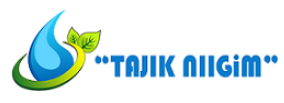 GU “TajikNIIGiM” was established in 1978 as a branch of VNIIGIM named after A.N. Kostyakov. Currently, the Institute has been functioning under the auspices of the Ministry of Energy and Water Resources of Tajikistan. Currently, the Institute carries out research and innovation development in the area of land reclamation and irrigation. 55 researchers, including 6 Doctors of Sciences, 5 Candidates of Sciences, and 14 support staff members work at the Institute.
GU “TajikNIIGiM” was established in 1978 as a branch of VNIIGIM named after A.N. Kostyakov. Currently, the Institute has been functioning under the auspices of the Ministry of Energy and Water Resources of Tajikistan. Currently, the Institute carries out research and innovation development in the area of land reclamation and irrigation. 55 researchers, including 6 Doctors of Sciences, 5 Candidates of Sciences, and 14 support staff members work at the Institute.
Activities in 2021
Research is carried out on the following themes: (1) Efficient water use and energy saving in maintaining irrigation canals (2017-2021); (2) Development of effective bank-protection methods to protect population and utilize adjacent land in the middle reaches of the Kafirnigan River (2019-2023); (3) Monitoring and assessment of the conditions of irrigated land and ways for reclamation through innovative approaches in the Beshkent Valley in Tajikistan (2021-2025). The research efforts on the development of effective mechanism for financing water use to achieve national strategic goals and the development of new scientifically-grounded methods to improve operation of irrigation infrastructure in WUAs passed expert review at the Tajik Academy of Sciences and the Tajik Academy of Agricultural Science and were submitted to ministries of economy and finance for financing in 2022-2026.
Events. The following events were held: (1) roundtable “Prospective areas to achieve water, energy and food security” (June 30); (2) training in modern methods of water measurement and innovative technologies of water use (September 1-3, Kulyab, Khatlon province); (3) scientific meeting on Hissar Experimental Polygon dedicated to the Day of Irrigators (December 1); (4) Republican scientific-practical workshop “Water management: challenges and ways for sustainable development to ensure energy self-sufficiency and food security in Tajikistan” (October 6).
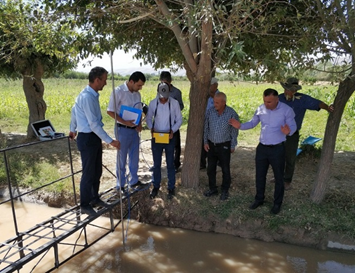
Cooperation. The Institute signed agreements with (1) the FAO office in Tajikistan on technical assistance in "Building national capacities to estimate crop water requirements under different climate change scenarios"; (2) TAU named after Shotemur on cooperation.
Awards. Four employees of the Institute were awarded with the Diploma of the Parliament (Majlisi Namoyandagon Majlisi Oli) of Tajikistan and diplomas and letter of gratitude of the Ministry of Energy and Water Resources of Tajikistan for their services and scientific activities.
Publications. (1) Collection of scientific papers "Water management: challenges and ways for sustainable development", volume IV, dedicated to the 30th anniversary of state independence of Tajikistan; (2) "Recommendations for the use of saline irrigated land in the South-East of Tajikistan", Dushanbe, ChDMM "Khochi Hasan", 2021, 32 p.; (3) "Recommendations on innovative technologies of crop irrigation under conditions of climatic change in Tajikistan", Dushanbe, Khoji Hasan Publishing House, 2021, 40 pp.; (4) "Methodological recommendations on developing comprehensive measures for reducing water use and energy consumption when designing new and modernizing existing pumping irrigation systems in Tajikistan", Dushanbe, Khoji Hasan Publishing House, 2021, 34 pp.

Scientific papers of the Institute’s researchers were published in IOP Publishing, IOP Conf. Series: Earth and Environmental Science, Izvestiya Akademiyi Nauk Respubliki Tadjikistan (News of the Academy of Sciences of Tajikistan), Bonuvon, Inson va Tabiat, etc.
Source: GU “TajikNIIGiM”
Ukraine. Institute of Water Problems and Land Reclamation (IWPLR)
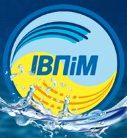 The IWPLR Institute was founded in 1929. The Institute carries out fundamental and applied research in the area of hydraulic engineering, irrigation and drainage, water management, agricultural water supply, land reclamation and environmental monitoring. It deals also with the design of water facilities and water supply and sanitation systems.
The IWPLR Institute was founded in 1929. The Institute carries out fundamental and applied research in the area of hydraulic engineering, irrigation and drainage, water management, agricultural water supply, land reclamation and environmental monitoring. It deals also with the design of water facilities and water supply and sanitation systems.
Activities in 2021
Research. The Institute’s researchers work on the Concept of Western group water supply development, considering the connection of settlements in Berdyansk region, and are the members of the Interdepartmental Coordination Council on Water Resources.
Events. The Institute held: (1) International scientific-practical workshop “Sustainable nature use and green economy from a perspective of transboundary cooperation” (online, April 9); (2) training courses “Modern technologies and technique in irrigation” (online, June 8-9); (3) Regional forum “Irrigation 2021: modernization and innovations” (August 12); (4) Field day “No-till crop growing in the dry steppe zone” (August 18).
Institute’s researchers took part in (1) the hearings of the Verkhovna Rada Committee on Environmental Policy and Nature Management "35 years since the Chernobyl catastrophe: challenges and prospects of development in the exclusion zone" (April 8); (2) a meeting on implementation of land irrigation projects (June 9); (3) a meeting “Monitoring of natural environment in Volynsk province in the potential impact zone of Khotislavsk quarry, Republic of Belarus” (June 29); (4) visiting conference “Status of Shatsk lakes and undertaken measures for improvement” (June 30); (5) webinar “Rainwater harvesting against traditional water collection” (July 15); (6) All-Ukrainian Day of Potato “Potato blockchain” (August 26-27); (7) meeting of the land reclamation staff (August 30); (8) 3rd International congress on environmental chemistry (Turkey, November 1-4); (9) session of the Bureau of the Ukrainian National Academy of Sciences Presidium on "Application of geoinformation systems and technologies in irrigated agriculture in the south of Ukraine" (November 17); (10) discussion “Agricultural land productivity in the context of state policy” organized by FAO (December 2); and, (11) meeting on provision of safe drinking water supply and irrigation in Zaporozhie region (December 15).
Mass media. Director of the Institute, M.I. Romaschenko spoke in: (1) "Morning on the Public" on water supply, climate change impact on Ukrainian wetlands and the challenge of minimizing the negative impact on aquatic ecosystems (February 2); (2) "Imperative", Radio Kultura on the World Water Day (March 22); (3) "News of Azov Region", Radio Liberty on water supply in southern Ukraine (December 16).
Publications. Joint publication of the Institute and the Hydrometeorological Center of Ukraine “Conceptual basis of drought management plan in Ukraine”
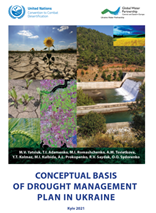
Source: IWPLR Institute
10.4. International Research Institutes Working on Water Issues in Central Asia
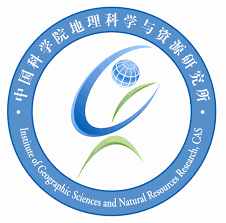 Institute of Geographic Sciences and Natural Resources Research, Chinese Academy of Sciences (IGSNRR) is a multidisciplinary research institute focusing on physical geography and global change, human geography and regional development, natural resources and the environment, geographical information systems and surface simulation, the terrestrial water cycle and water resources, ecosystem network observation and modeling, and Chinese agricultural policy. Through research in these domains, the Institute aims to figure out challenges that are related to national sustainable development on natural resource and the environment, as well as improving its own innovative capacity.
Institute of Geographic Sciences and Natural Resources Research, Chinese Academy of Sciences (IGSNRR) is a multidisciplinary research institute focusing on physical geography and global change, human geography and regional development, natural resources and the environment, geographical information systems and surface simulation, the terrestrial water cycle and water resources, ecosystem network observation and modeling, and Chinese agricultural policy. Through research in these domains, the Institute aims to figure out challenges that are related to national sustainable development on natural resource and the environment, as well as improving its own innovative capacity.
In recent years, numerous rewarding progresses have been achieved by the cooperation between IGSNRR and countries in Central Asia, mainly in scientific research, personnel cultivation and collaborations. These advances are all supported by the strategic priority research program of Pan-Third Pole Environment Study for a Green Silk Road (Pan-TPE) of the Chinese Academy of Sciences (CAS), and the Belt and Road Alliance of International Scientific Organizations (ANSO) international cooperation platform. IGSNRR has accomplished a lot of work on water resources in Central Asia. Water resources evolution of key river basins in five Central Asian countries have been simulated and analyzed, which reveals temporal variation characteristics of agricultural water-use and future evolution trend of agricultural water demand in Central Asia under changing scenarios for 20 years. A quantitative evaluation of water resources carrying capacity of the five Central Asian countries and water - energy - overall grain security have also been assessed.
In 2019, IGSNRR signed a memorandum with the SIC ICWC, they jointly applied for The Sino-Uzbekistan cooperation project "The E-Rules Development of Flow Regulation in The Amu Darya River Basin", which was co-funded by bilateral governments. In terms of talent cultivation and academic exchange, a young scientist from the SIC ICWC has cooperated and exchanged in IGSNRR for two years. Other scholars from Central Asian countries have studied and exchanged in IGSNRR as post-doctoral fellows and visiting scholars.
Source: IGSNRR